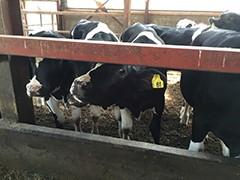Corn (or maize, as it is known throughout much of the world) is the most widely-produced feed grain in the United States. In mid-July, the U.S. Department of Agriculture (USDA) estimated planted corn acreage at 88.897 million acres (35.9 million hectares), which translates to an estimated total corn supply of 13.7 billion bushels (348 million metric tons). Corn consistently makes its way into rations for beef and dairy cattle, poultry, swine, aquaculture and companion pets because of its high energy content and its availability.
Distiller’s dried grains with solubles (DDGS) is a co-product of dry-milled ethanol production. Its utilization as a feed ingredient is well documented as both an energy and protein supplement.
There are more than 200 ethanol plants in the United States that produce DDGS in addition to renewable fuels, with most located in the Corn Belt stretching across the states of South Dakota, North Dakota, Indiana, Ohio, Wisconsin, Michigan and Kentucky.
Almost all of DDGS produced in the United States derives from ethanol production using corn as a feedstock, with about 5 percent coming from ethanol production using sorghum as a feedstock.
“For beef and dairy cattle nutrition, corn, corn silage and corn by-products are a staple,� said Alvaro Garcia, Ph.D., a professor at South Dakota State University.
DDGS can be used to match the nutrient requirements of corn to help balance costs.
“The corn market often dictates the usage of DDGS. It is an excellent source of energy and protein, and it is highly palatable and easily consumed by cattle,� Garcia said.
Along with corn, DDGS is also an essential ingredient for poultry rations. It’s an economical feedstuff for broiler and layer producers as it is easily digested and low in fiber, said Joe Hess, Ph.D., professor of poultry science at Auburn University.


